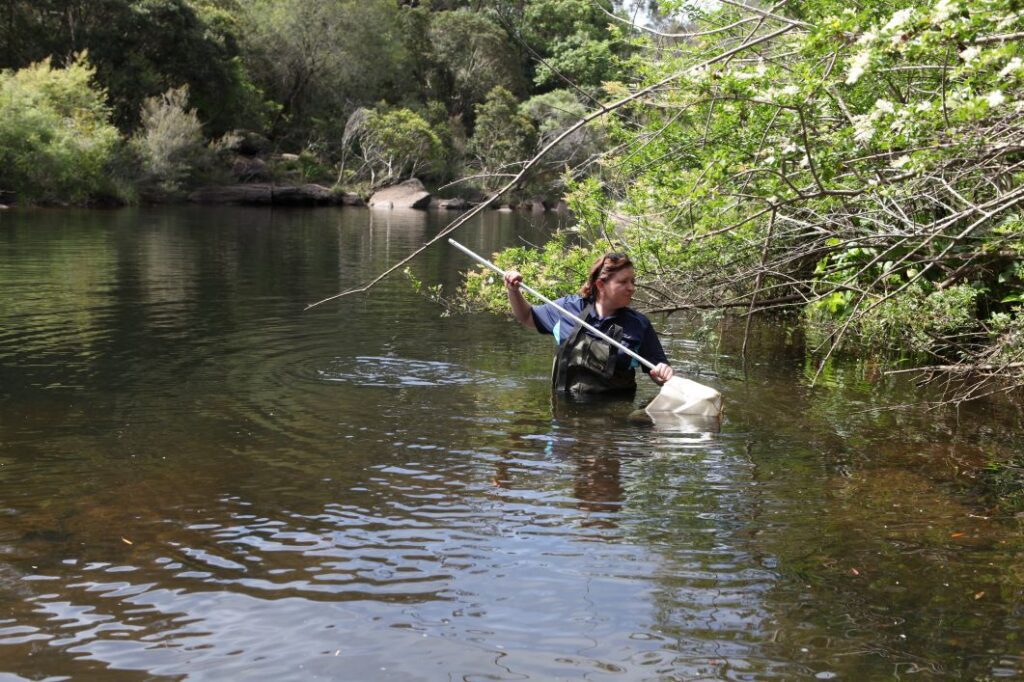
Floods and frequent rainfall have had a profound effect on water quality in the Georges River catchment in the past 12 months.
As a result, the recently released Georges River Report Card 2021-2022 downgraded the estuary to “fair’’ from the year before.
An increase in pollutants and nutrients being flushed by rainfall into the extensive network of stormwater systems in urban areas entering the Georges River was the main cause.
The report said the headwaters of the Georges River at O’Hares Creek was downgraded from excellent to good, while Prospect Creek, often regarded as a problem spot, the water quality grade improved from poor to fair.
“This year was the wettest on record for Sydney and this was reflected in the water quality results,’’ says Georges Riverkeeper aquatic ecologist Marion Huxley, pictured collecting water bug samples .
“Rainfall has a huge impact on our natural waterways,” she said.
“Pollution and larger more frequent flows from urban runoff and sewer overflows can cause higher nutrient loads, erosion and litter issues in our natural waterways which leads to reduced water quality.
“Prospect Creek and Orphan School Creek have improved their grade this year. Overall, they did much better in riparian vegetation grades and chemistry grades which pushed their overall grade up,’’ Ms Huxley said.
“Creek rehabilitation, gross pollutant trap maintenance and litter clean ups by local councils and Georges Riverkeeper, has meant Prospect and Orphan School Creeks have improved in in their overall health this year.
“This is great news and should encourage more creek rehabilitation and litter clean-up projects.”
However the report points out that many of the less urban streams in bushland areas dropped a grade from their consistently excellent scores of the past.
“Higher pollutants in the bushland areas as well as erosion and skewed chemical results probably affected their grades,” explains Ms Huxley.
“The estuaries, on average dropped a grade. Some of the bays and backwaters decreased in water quality due to increased turbidity.’’
